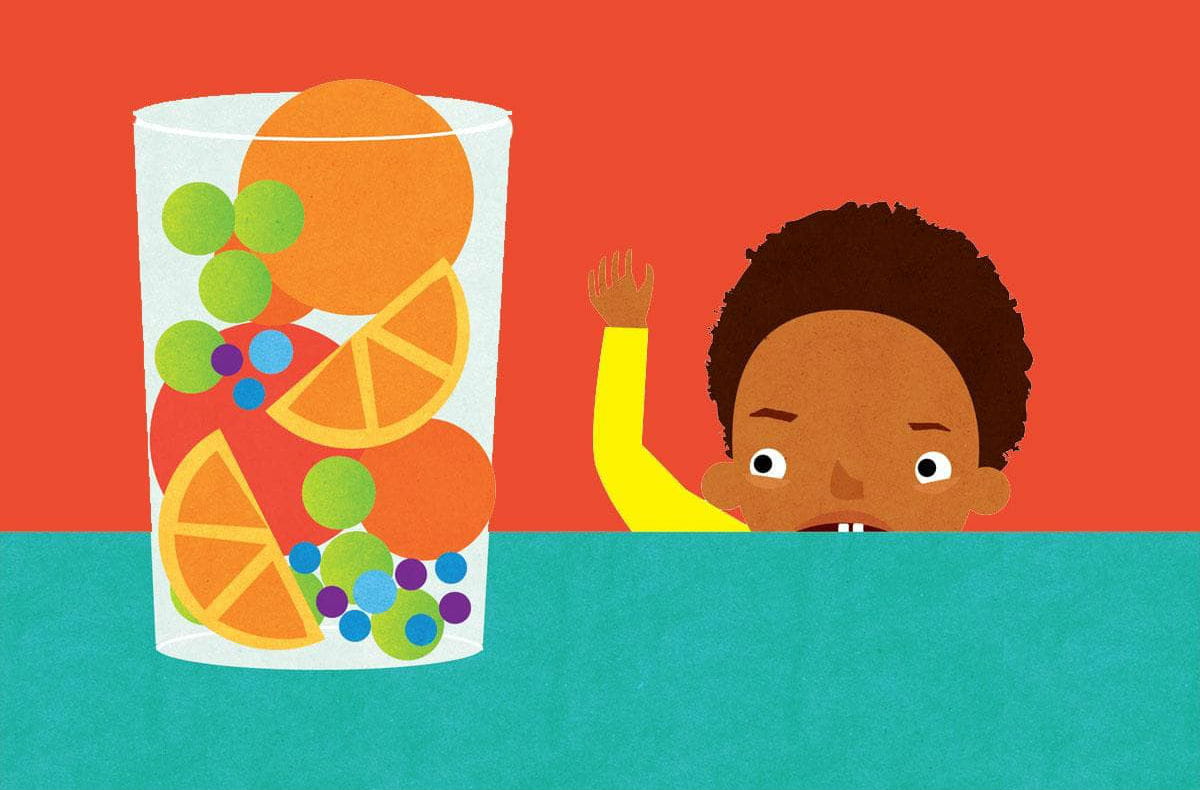Fruit's in the House! Why We Kicked Juice to the Curb

By Carolyn Sweeney Hauck
At many daycares across the country, kids still get juice at meal and snack time. How much juice do KinderCare kids get? Zip, zilch, nada. In 2015, we stopped serving juice for a good reason: It’s the right thing to do for growing bodies.
“Juice is basically just sugar, and that’s about it,” says Courtney Hines, KinderCare’s nutritionist. Because of the juicing process, she’ll tell you, there’s also no fiber in a cup of OJ, and not nearly as many of the vitamins and minerals that, say, an actual orange might contain. “Juice might fill up kids’ tummies for an hour, but then they’re going to be hungry again,” Hines notes. “That’s because juice displaces room for healthier, more nutrient-rich options like yogurt or apples.” And those are exactly the kinds of foods that keep active, growing bodies fueled for much longer!
Everyone Belongs In Our Circle
At KinderCare, we’re committed to building warm, welcoming and supportive classrooms for children of all abilities, backgrounds and experiences.
Find a center near you“But I’m sirsty!”
We know that juice can be a treat (or a go-to) for thirsty kids at home—and that’s okay, as long as it’s moderated. The American Association of Pediatrics recently updated their juice guidelines, recommending no juice at all for children under the age of one year, four ounces or less for children ages one to three, and just four to six ounces per day for children ages four to six.
That’s not much, but now KinderCare families can feel more empowered to track their own children’s juice intake knowing that they’re not getting any at school. So what are they getting in our centers? Water, for one, all day long, and hormone-free milk at snacks and lunch—keeping thirst quenched, bellies full, and minds and bodies ready for the day.
What’s more, we’re teaching kids about the importance of whole foods. Many of our kids can tell you why big words like “fiber” and “protein” are good for their growing bodies, for example. Watch these kids break down why whole foods are the way to go.

Our Home Guide to Whole-Food Snacking
Hungry kids can equal cranky kids. Whether you’re an hour from dinnertime or driving home from school, a quick pick-me-up will keep them happy (and keep you from pulling your hair out) until dinner is on the table. These snack tips will keep their bodies growing strong (and keep ‘em from crashing).
1. Keep Healthy Snacks Handy.
Bags of nuts and dried fruit make great on-the-go snacks to keep in your car (or your bag). Other awesome ideas include low-sugar granola bars and fruit or veggie slices—so you can focus on getting from point A to point B without listening to hungry-tummy complaints from the back seat.
2. Fill Them Up on Fiber and Protein.
Fiber and protein keep kids fuller longer. Meltdown avoided! At our centers, our go-to’s are apple slices with seed butter (make it nut butter if your child isn’t allergic), yogurt, and cheese cubes.
3. Variety Is Truly the Spice of Life.
Stuck in a carrot rut? It happens. The truth is that kids (and grown-ups) need ALL of the vitamins and minerals different fruits veggies have to offer, so branch out and try something new! A fun way to focus on eating fruits and veggies? Try to eat the rainbow.





